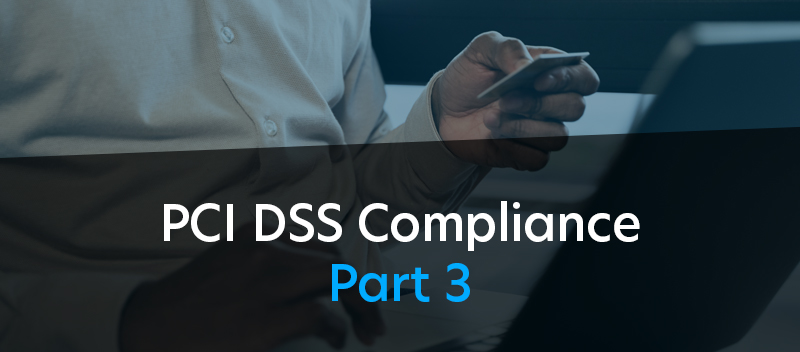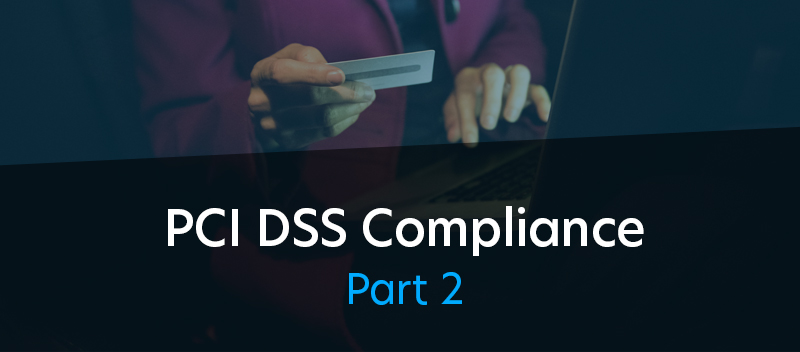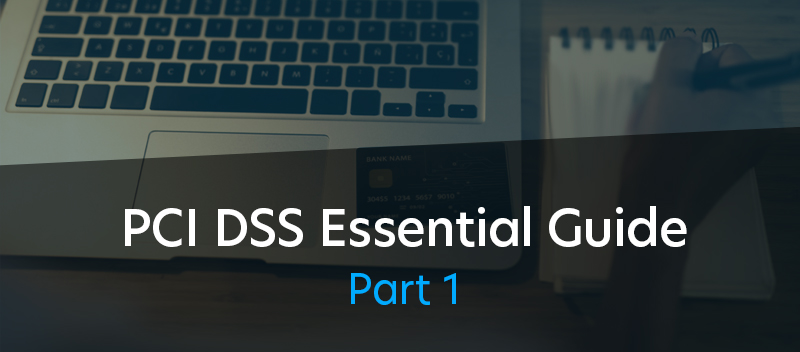Blog Unlocking the Secrets: The True Cost of Vulnerability Assessments Demystified
Unlocking the Secrets: The True Cost of Vulnerability Assessments Demystified

Vulnerability assessments are vital components of an organization’s defense strategy, enabling the identification and remediation of security weaknesses before they can be exploited. However, amidst the urgency to fortify digital assets, many businesses grapple with understanding the true cost and value that vulnerability assessments entail.
This article explores the direct costs associated with conducting thorough vulnerability assessments and illuminates the less tangible benefits of proactive vulnerability management. We aim to equip readers with a deeper understanding of why investing in vulnerability assessments is a necessary expenditure and a strategic move towards a more secure and resilient digital infrastructure.
Defining the Scope of Vulnerability Assessments
Below, we explore the types of vulnerability assessments and the factors that influence their scope and complexity.
Types of Vulnerability Assessments
— Network Assessments: Identifying vulnerabilities in an organization’s network infrastructure, including switches, routers, and firewalls. This type assesses the network components’ security posture and configurations to prevent unauthorized access.
— Application Assessments Targeting the security of applications, whether web-based, desktop, or mobile. They look for vulnerabilities like SQL injection, cross-site scripting, and authentication issues that could compromise application security.
— Cloud Assessments: With the increasing adoption of cloud services, this assessment type focuses on cloud-based infrastructure and applications. It evaluates the security of cloud environments against misconfigurations, access control issues, and other cloud-specific vulnerabilities.
— Physical Security Assessments: Physical security assessments are crucial, although not directly related to digital security. They identify vulnerabilities that could lead to digital breaches, such as inadequate surveillance or poor access controls to server rooms.
— IoT Assessments: Given the proliferation of Internet of Things (IoT) devices, these assessments are becoming increasingly important. They focus on the security of connected devices, from smart thermostats to industrial sensors, evaluating their susceptibility to attacks.
Factors Influencing Scope and Complexity
— Technology Diversity: The variety of technologies in use (e.g., operating systems, databases, cloud platforms) can broaden the assessment scope, requiring specialized knowledge for different environments.
— Regulatory Compliance: Organizations subject to industry regulations (like HIPAA for healthcare or GDPR for data protection) may have specific assessment requirements that add complexity.
— Organization Size and Geography: Larger organizations or those spread across multiple locations may face increased complexity in coordinating and conducting assessments effectively.
— Third-party Integrations: The extent to which an organization relies on third-party vendors and services can expand the assessment scope, incorporating vendor risk assessments and the security of integrated services.
By defining the scope of vulnerability assessments and understanding the factors that contribute to their complexity, organizations can better prepare for and allocate resources toward their cybersecurity efforts.
For more on our vulnerability assessment services, Click Here
Uncovering the True Cost of Vulnerability Assessments
Vulnerability assessments are critical for identifying and mitigating security risks, but understanding their true cost is vital for effective budgeting and financial planning.
— Direct Costs:
Assessment Tools and Licenses: Significant investments are often required to purchase or subscribe to state-of-the-art vulnerability assessment tools. These tools can vary widely in price, depending on their capabilities and the scale of their application.
Professional Services: Many organizations opt for external expertise to conduct thorough assessments. The cost of hiring cybersecurity professionals or consultants can add substantially to the overall expense, influenced by the scope of the assessment and the professionals’ level of expertise.
— Indirect Costs:
Personnel: Even with external help, internal personnel must be involved. This includes time spent by IT staff to facilitate assessments and by other employees participating in security training programs.
Infrastructure and Operational Expenses: Additional hardware or software may be needed to support the assessment process. Operational expenses can also rise due to the need for more extensive network monitoring and management during the assessment period.
— Hidden Costs:
Remediation: Post-assessment, the cost of remedying identified vulnerabilities can vary significantly, depending on the severity and nature of the weaknesses found. Remediation efforts might require additional tools, patches, or even infrastructure overhauls.
Downtime: Conducting vulnerability assessments and implementing remediation strategies can lead to system downtime, impacting productivity and potentially causing lost revenue.
Compliance-related Expenses: For organizations under regulatory mandates, ensuring that assessments meet compliance standards can introduce additional costs, from compliance consulting fees to implementing specific compliance-centric technologies.
TrustNet’s Comprehensive Pricing Structure
TrustNet tailors its vulnerability assessment services to cater to a broad spectrum of clients, from entrepreneurs to large enterprises, ensuring a best-fit approach that aligns with organizational size and requirements:
- Industry-Best Methodology: TrustNet employs cutting-edge, industry-leading methodologies to ensure comprehensive and effective assessments.
- Independent and Experienced Team: Their services are delivered by an independent team of seasoned cybersecurity professionals, bringing a wealth of experience to every assessment.
- Reporting: TrustNet provides detailed reporting that includes:
– Compliance Mapping: Identifying how vulnerabilities relate to compliance requirements.
– Remediation Plan: Offering a strategic plan for addressing identified vulnerabilities.
– Technical Deliverables: Detailed technical reports on findings.
– Executive Summary: A high-level summary tailored for executive leadership, highlighting key risks and recommendations.
Understanding the multifaceted costs associated with vulnerability assessments allows organizations to plan better and allocate resources. TrustNet’s structured approach to pricing and comprehensive service offerings ensure that businesses of all sizes can access top-tier vulnerability assessment services tailored to their specific needs.
Evaluating the Benefits of Vulnerability Assessments
Here are the key benefits of conducting vulnerability assessments.
Identifying and Prioritizing Critical Vulnerabilities
Systematic Identification: Vulnerability assessments systematically uncover security flaws across an organization’s digital infrastructure, ensuring no critical system component is overlooked.
Risk Prioritization: These assessments help categorize vulnerabilities based on severity, enabling organizations to prioritize remediation efforts effectively, focusing first on the most critical vulnerabilities that could be exploited.
Reducing the Attack Surface and Mitigating Risk
Attack Surface Minimization: By identifying and addressing vulnerabilities, organizations can substantially decrease their attack surface, making it harder for attackers to find entry points.
Proactive Risk Mitigation: Understanding the vulnerabilities within systems allows for proactive measures to be taken, reducing the likelihood of successful attacks and mitigating potential risks to the organization.
Demonstrating Compliance and Meeting Regulatory Requirements
Compliance Assurance: Many industries require regular vulnerability assessments as part of their regulatory compliance standards. Conducting these assessments ensures that an organization meets these requirements, avoiding potential fines and penalties.
Trust and Reputation: Demonstrating compliance through regular assessments can also enhance trust with clients and stakeholders, reinforcing the organization’s commitment to maintaining high-security standards.
Improving Overall Security Posture and Reducing the Likelihood of Breaches
Enhanced Security Measures: The insights gained from vulnerability assessments enable organizations to fortify their security measures and adopt more effective and tailored cybersecurity strategies.
Breach Prevention: By identifying and rectifying vulnerabilities, an organization’s overall security posture is strengthened. This significantly reduces the likelihood of successful cyberattacks and data breaches, thereby protecting sensitive information and assets.
Optimizing Your Vulnerability Management Program
Below are strategies for optimizing your vulnerability management program.
- Strategic Integration: Ensure vulnerability assessments are not siloed but integrated parts of your broader security strategy, aligning with organizational goals and risk tolerance levels.
- Policy Development: Develop and implement policies that dictate how often assessments should be conducted, which tools are used, and how findings will be addressed, ensuring consistency and alignment with security objectives.
- Automation Tools: Utilize automated scanning tools to regularly scan for vulnerabilities without manual intervention, saving time and resources while ensuring continuous monitoring.
- Technological Advancements: Adopt advanced technologies such as machine learning and artificial intelligence to predict potential vulnerabilities and automate responses to identified threats, enhancing efficiency and effectiveness.
- Centralized Dashboard: Employ a centralized security information and event management (SIEM) system to aggregate vulnerability data alongside other security metrics, providing a holistic view of the security posture.
- Cross-functional Collaboration: Ensure that vulnerability management data is shared with and informed by other security processes, such as incident response and threat intelligence, to enhance overall security operations.
- Regular Reviews: Conduct regular reviews of the vulnerability management program to assess its effectiveness, making adjustments based on evolving threats, technological advancements, and organizational changes.
- Feedback Loops: Implement feedback loops where lessons learned from past assessments and breaches inform future vulnerability management strategies, fostering a culture of continuous improvement.
TrustNet’s services encompass all these optimization strategies, ensuring that organizations can identify and mitigate vulnerabilities effectively and align these efforts with their overarching security strategies.
With TrustNet, businesses benefit from:
- A comprehensive approach that integrates vulnerability assessments into the broader security landscape.
- The use of advanced technology (see GhostWatch and iTrust) to streamline cybersecurity and compliance management processes.
- Effective integration of vulnerability data with other security tools and processes, supported by a knowledgeable and experienced team.
- A commitment to continuous improvement, with services designed to evolve alongside client needs and emerging threats.
Budgeting and Resource Allocation
Here’s a concise overview of how to approach budgeting and resource allocation for vulnerability assessments:
- Benchmarking: Consider industry benchmarks and standards to gauge an appropriate budget range for your organization’s size and sector.
- Cost-Benefit Analysis: Evaluate the costs of vulnerability assessments against the potential losses from security breaches to determine a cost-effective budget
- ROI Demonstration: Highlight the return on investment (ROI) by showing how vulnerability assessments can save costs associated with data breaches and non-compliance penalties.
- Case Studies: Present case studies or examples of similar organizations that have benefited from vulnerability assessments.
- Compliance and Reputation: Stress the importance of meeting regulatory requirements and protecting the organization’s reputation.
- Prioritization: Allocate resources based on the criticality of assets and the potential impact of vulnerabilities, focusing first on high-risk areas.
- Technology and Talent: Invest in automated tools to streamline assessments and allocate funds for partnering with skilled cybersecurity professionals such as TrustNet.
- Continuous Improvement: Set aside resources for regular updates and improvements to the vulnerability management process, ensuring adaptability to new threats.
The Future of Vulnerability Management
Looking ahead, the landscape of vulnerability management is set to evolve with advancements in technology and changes in cyber threat tactics. Organizations should stay informed of future trends, such as the increasing reliance on artificial intelligence for predictive threat analysis and the importance of integrating security measures into the early stages of product development.
For businesses seeking to overcome the complexities of cybersecurity, partnering with TrustNet offers robust protection against threats and vulnerabilities. Our expertise and innovative solutions, such as GhostWatch and iTrust, ensure that your organization can effectively anticipate, identify, and mitigate threats.
Contact Our Experts today.




